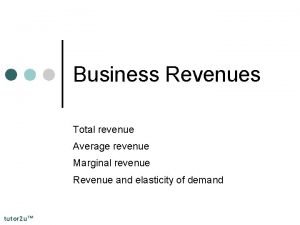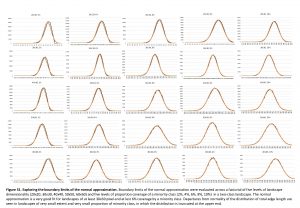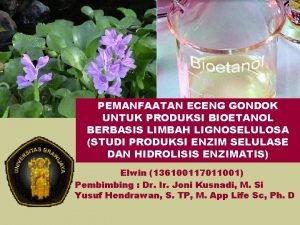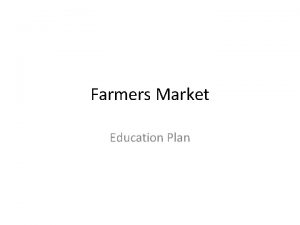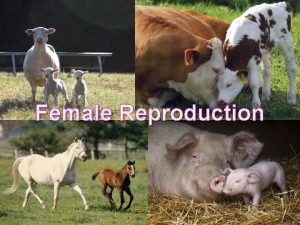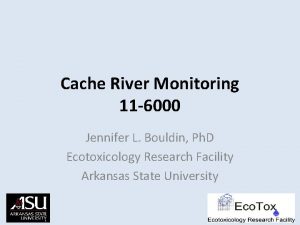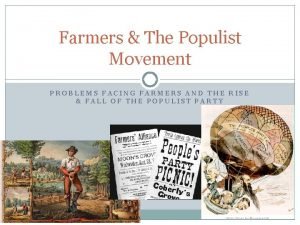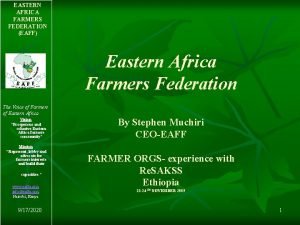Farmers revenue monitoring 6000 farmers 48 female in













- Slides: 13

Farmers revenue monitoring • 6000 farmers (48% female) in 5 districts into 54 centres. • In groups at different stages of development for registration. • It takes time to build trust and confidence with farmers. • Volume supply steadily increased from 2004 to 2006.

INCOME TO FARMERS Tshs 1/USD 1250 YEARS FARMERS CROP (% F) 2004 570 52 2005 2, 951 2006 6, 265 Tons INCOME USD CLERKS OTHERS TOTAL SC COST 672 7 27 887 5, 726 12, 160 4, 000 1 0, 842 1, 2 38 7, 252 35, 492 49, 560 6, 422 2 5, 000 2, 9 07 12, 960 96, 849 FARMERS TRANSPORT 43 3, 440 43 152 47 413 CRUSHER

Mobilization stage • Activities outlined in partners work plan • Partners move as team for mobilization, each with specific district, Unilever in all districts. • Mobilization team includes development partner, buyer (Unilever) and conservation partners. • Mobilization starts at district level- – introduce the project partnership and objectives – Seek government support – District authority accompany the team to the villages • Meeting conducted with village governments

Meetings with farmers • Villages governments fix date for calling village meetings • During village meetings – Partners introduced by village authority – Partners introduce the project (objectives & role of each partner) – Crop season is agreed. – Clerks appointed – Buying centre selected. – Questions clarified.

More awareness creation • • Posters and leaflets Frequent visit Using loudspeakers Training – On quality – Group formation – Leadership

Selection of clerks • NGOs and Unilever describe necessary qualifications for a good clerk. – Able to write and good in elementary mathematics – Of high integrity – Village resident etc • Farmers shortlist 3 names and vote democratically • Selected clerks undergo training conducted by NGO and Unilever. Series of exercises done to test knowledge.

Buying process • Clerks given equipment – Scales, bags, threads etc for managing stock. – Farmers registration books, bin cards and cash given at the beginning of buying season. – AB quality checked by clerk and one of the group committee member on each buying day • Agreed good quality AB nuts are: – weighed, – recorded, – Farmers paid on the same day and sign against cash receipt. • At the end of each day – Register books and bin cards updated – Cash reconciled, AB stacked. • Cash top-up is done by project staff regularly.

Transport & Crushing • Project staffs organize transport of the nuts to crushing site. • Weight measurement taken at both points (centre and factory) • Delivery notes issued to the transporters (third part) to manage the cargo. • With enough stock crushing starts. • Oil is fed directly to special tank while still warm and shipped when full.

Achievement • Good cooperation from local governments • Highly motivated farmers (photo) • Increase in volume and number of farmers. • Women participation encouraging (gender) • Responsible and committed partners, though busy! • Experienced clerks with time. • Farmers income improving with time. • Domestication well received by farmers.

Challenges • Payment system – Risk – Security of the staff • Control of stocks at the factory ? ? • Partners priorities. • Transport

PRODUCTION 2006 PRICE/KG 150 /= FARMERS CROP INCOME DISTRICTS FEMALES TOTAL % FEMALES KGS TONS TSHS GBP AV per av 2401 FARMER MHEZA 1, 547 1, 902 3, 449 44. 9 280, 567 281 42, 085, 050 17, 528 5. 1 KOROGWE 965 858 1, 823 52. 9 70, 591 71 10, 588, 650 4, 410 2. 4 LUSHOTO 145 198 343 42. 3 7, 404 7 1, 110, 600 463 1. 3 MVOMERO 311 339 650 47. 8 54, 000 54 8, 100, 000 3, 374 5. 2 KILINDI TOTAL 2, 968 3, 297 6, 265 412, 562 413 61, 884, 300 25, 774 47. 4 4. 1

PRODUCTION 2005 PRICE/KG 100 /= FARMERS CROP INCOME % DISTRICT S FEMALE S MALES TOTAL KGS TONS TSHS GBP AV/FARM ER av 2401 MHEZA 948 1, 293 2, 241 42. 3 133, 543 134 13, 354, 300 5, 562 2. 5 KOROGW E 148 238 386 38. 3 5, 063 5 506, 300 211 0. 5 LUSHOTO 32 59 91 35. 2 753 1 75, 300 31 0. 3 MVOMER O 55 60 115 47. 8 11, 975 12 1, 197, 500 499 4. 3 KILINDI 75 43 118 63. 6 1, 117 1 111, 700 47 0. 4 TOTAL 1, 258 1, 693 2, 951 42. 6 152, 451 152 15, 245, 100 2. 2 FEMAL ES 6, 349

PRODUCTION 2004 PRICE/KG 100 /= FARMERS CROP INCOME % DISTRICT S FEMALE S KGS TONS TSHS GBP AV/FARME R MALES TOTAL av 2401 MHEZA 294 276 570 42, 788 43 4, 278, 800 1, 782 KOROGW E LUSHOTO MVOMER O KILINDI TOTAL 294 276 570 42, 788 43 4, 278, 800 1, 782 FEMAL ES 51. 6 3. 1
